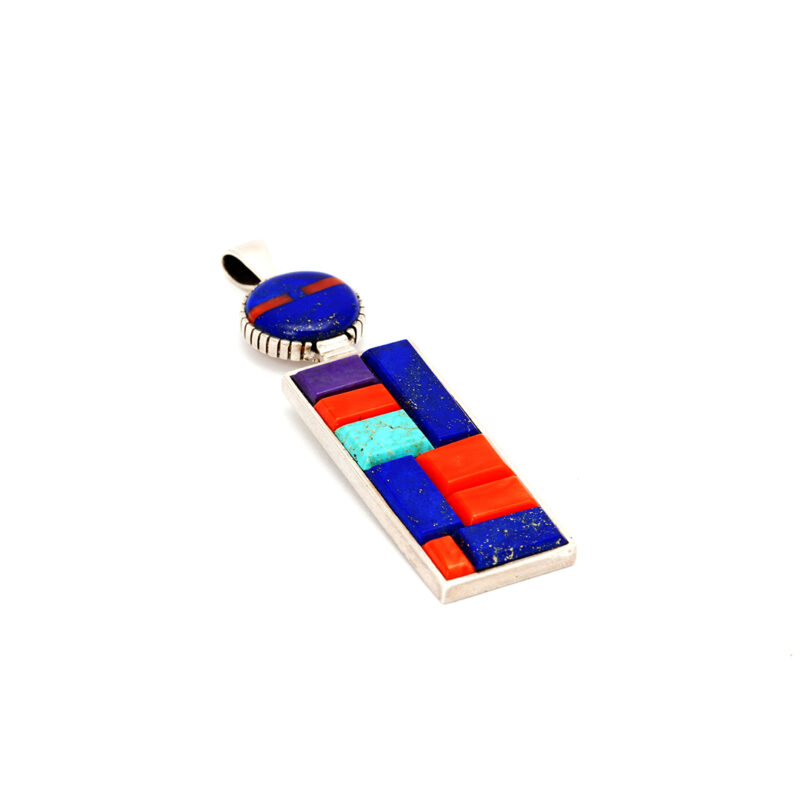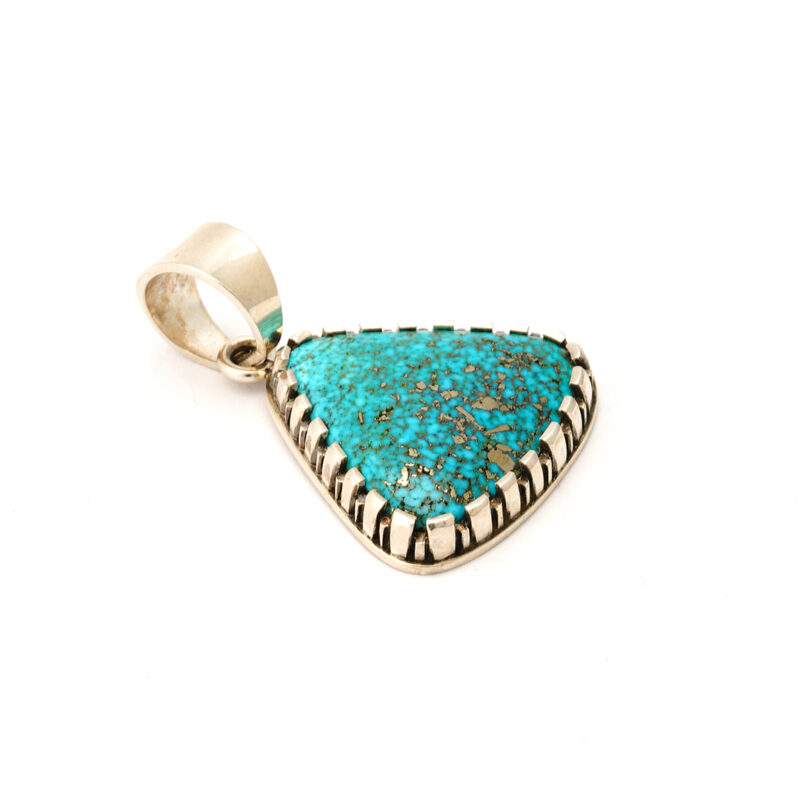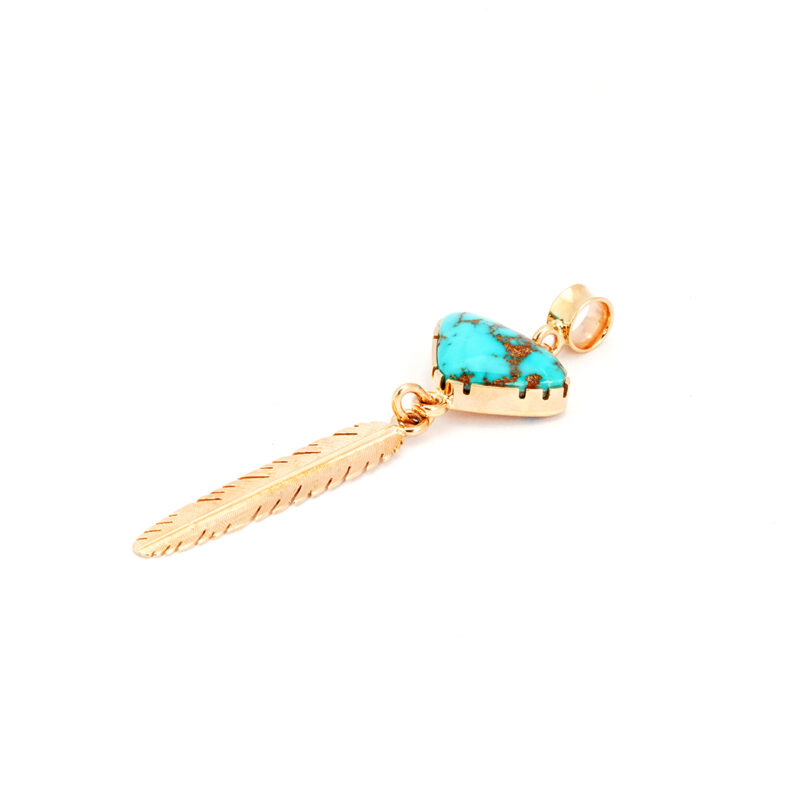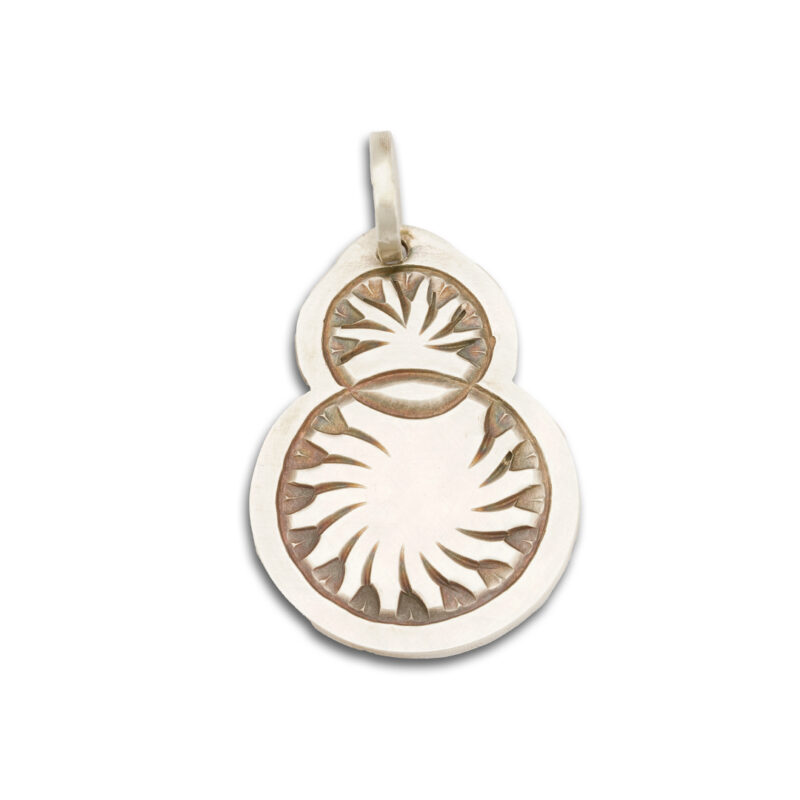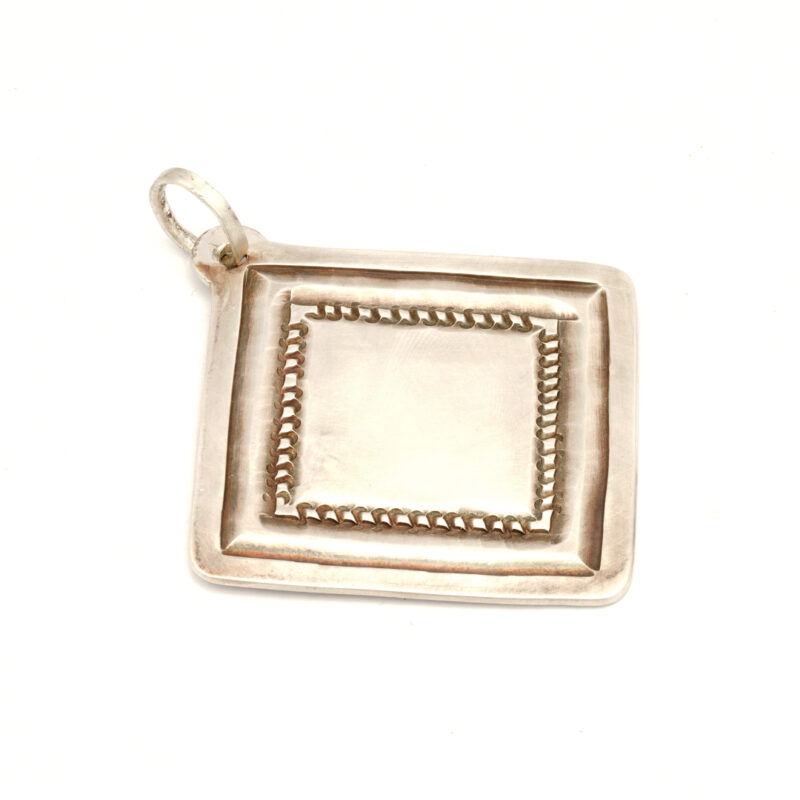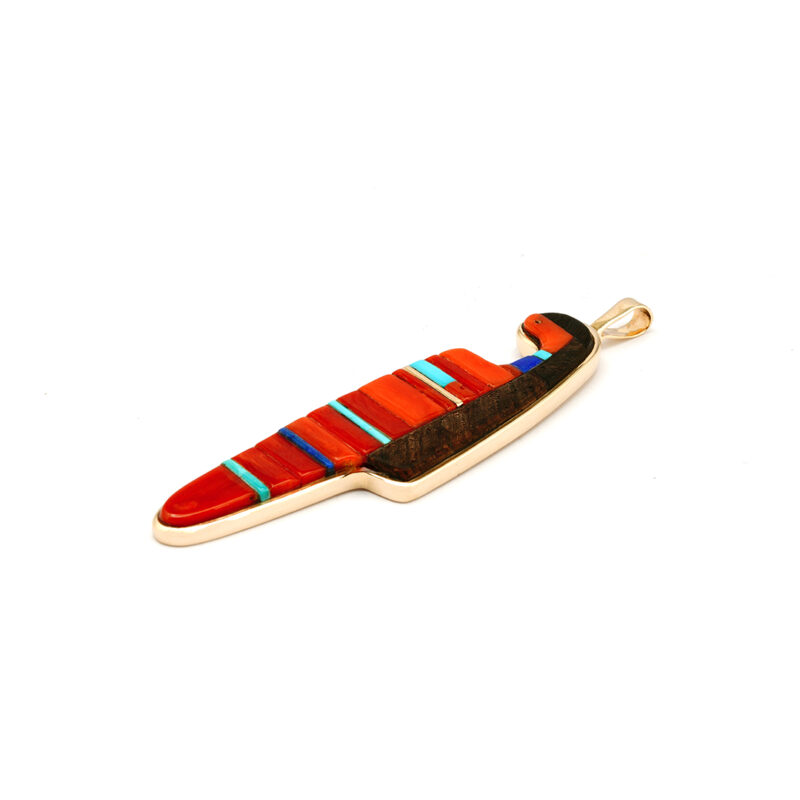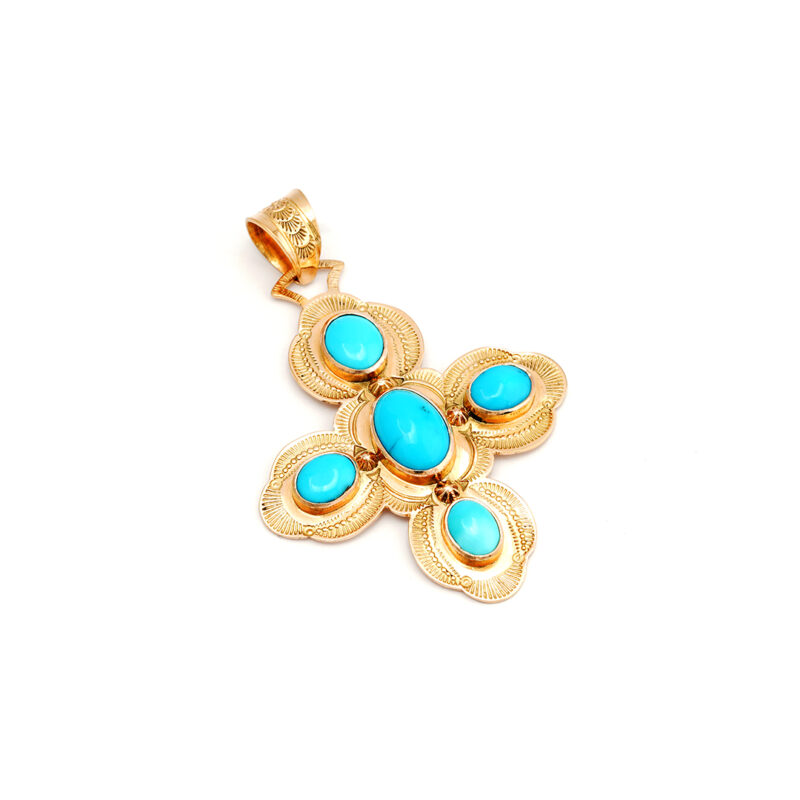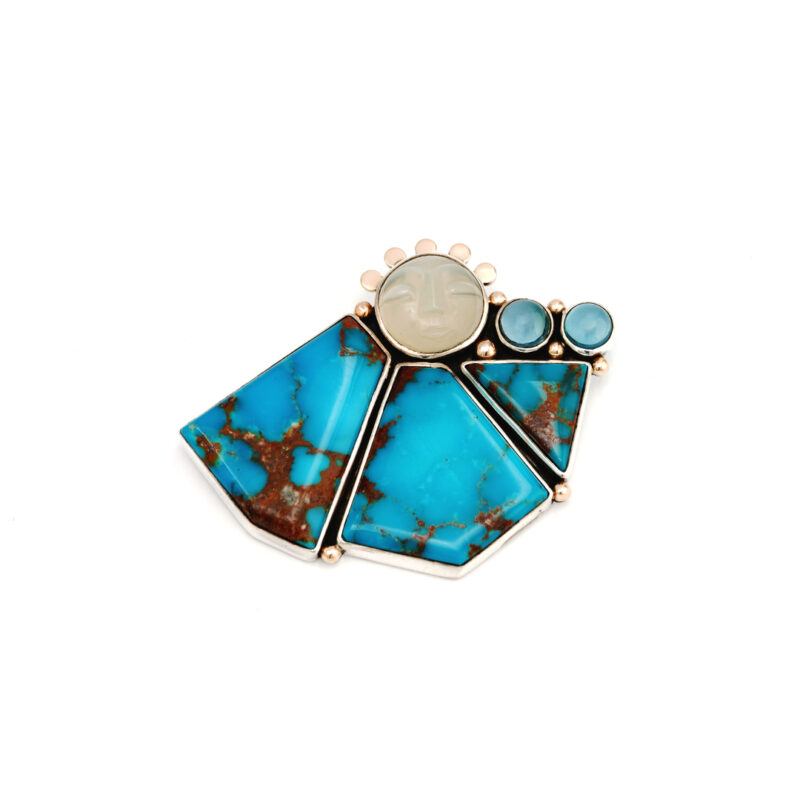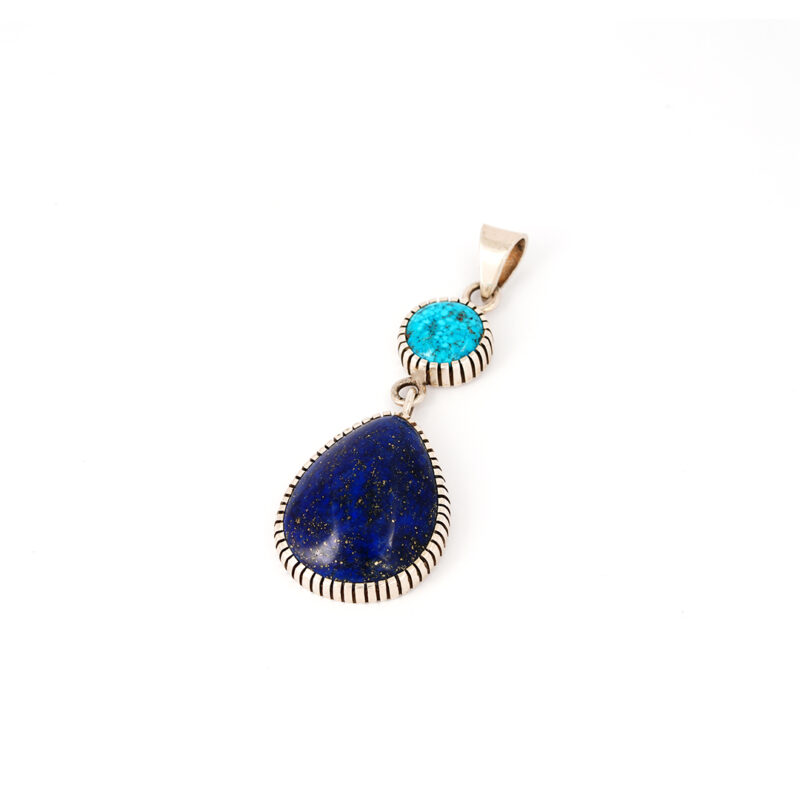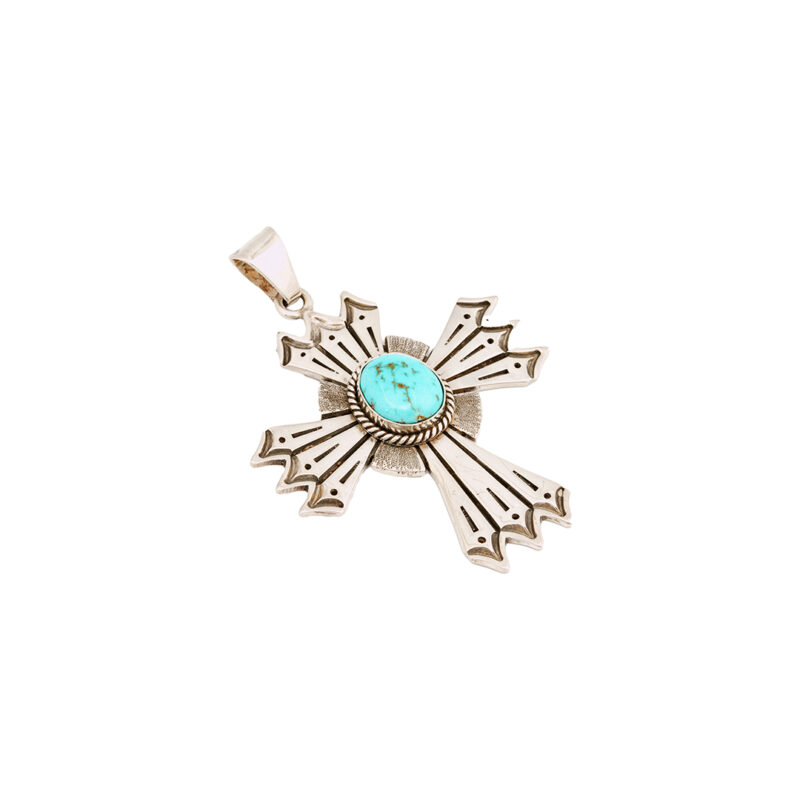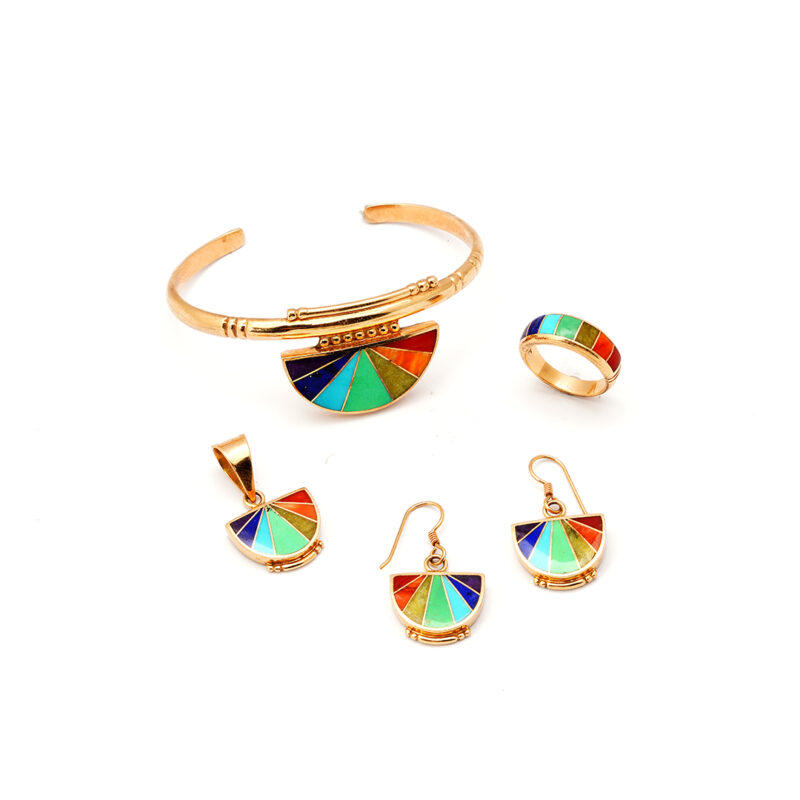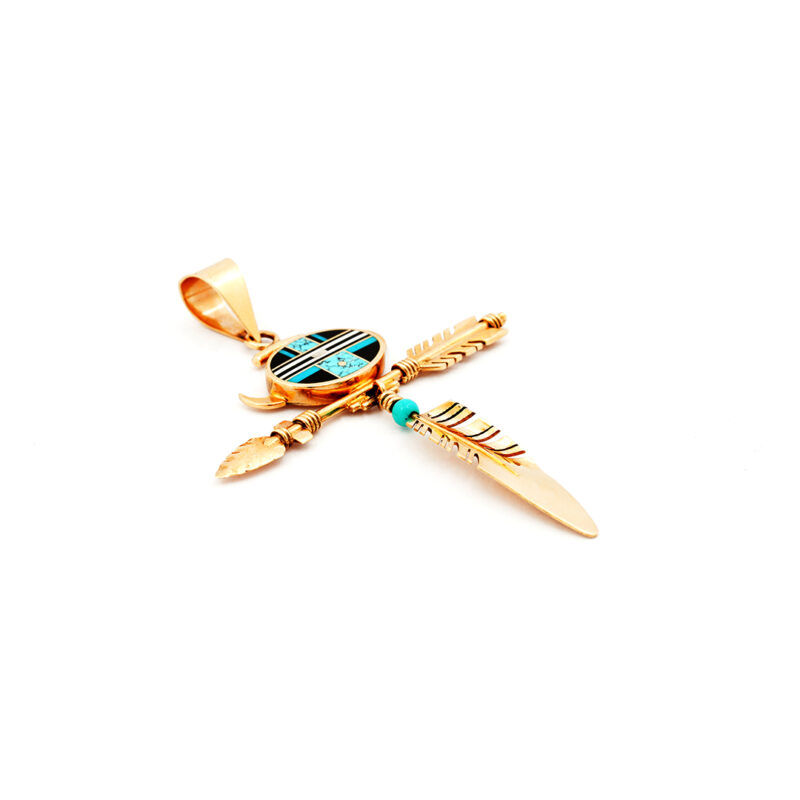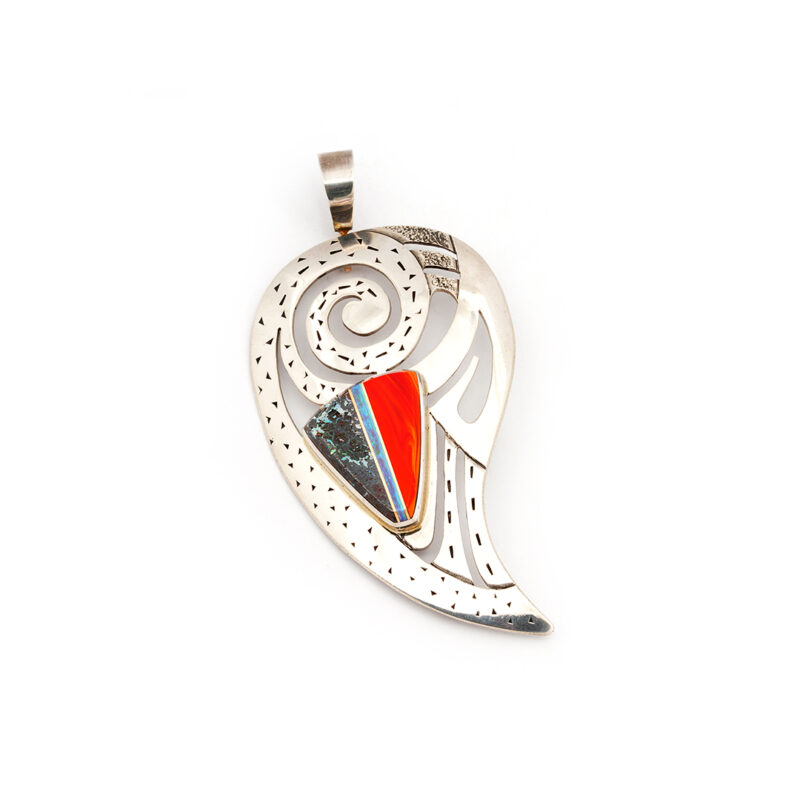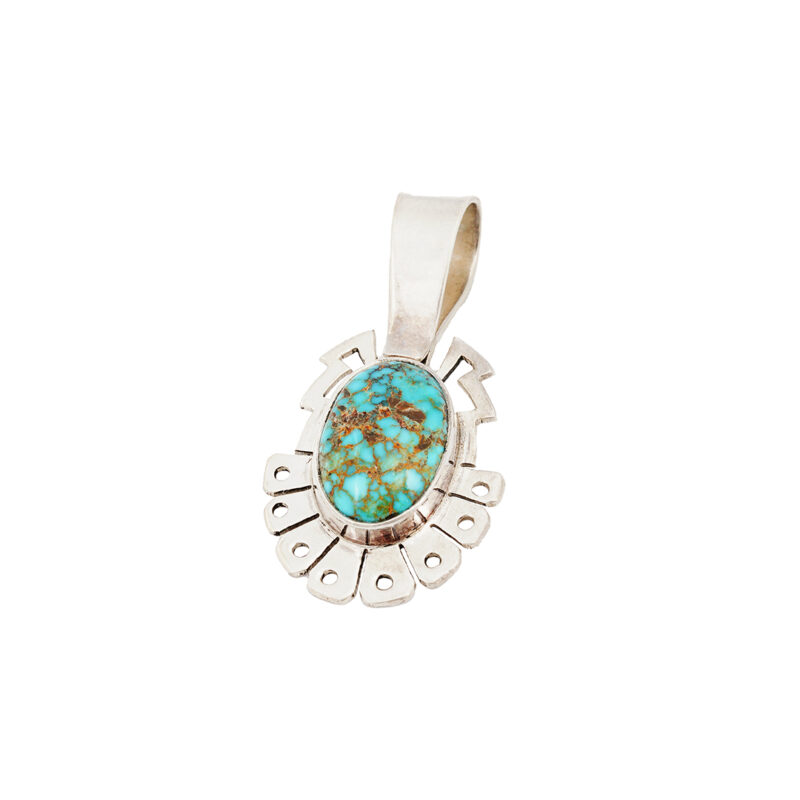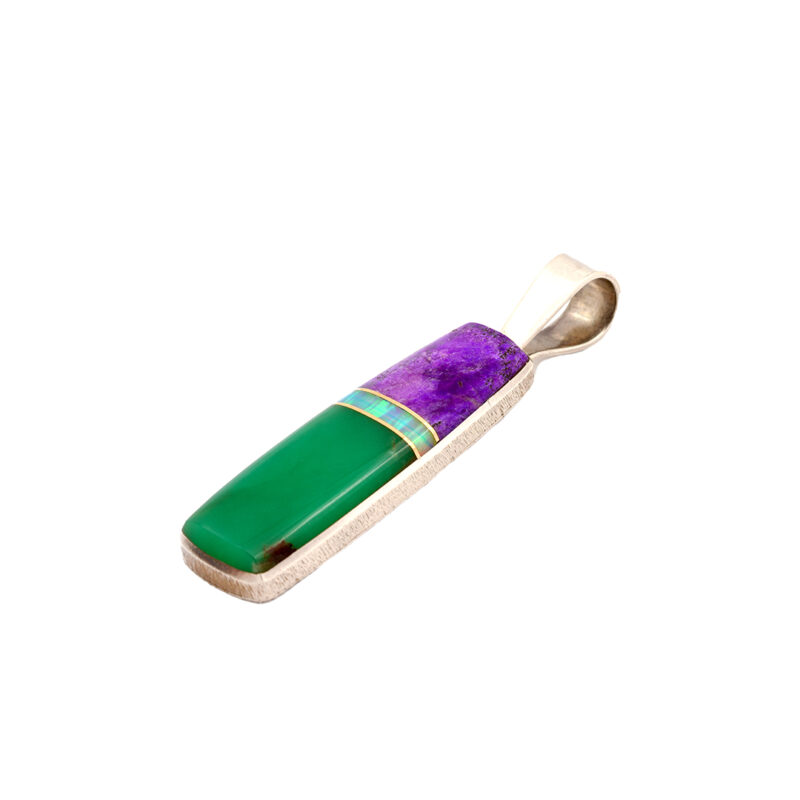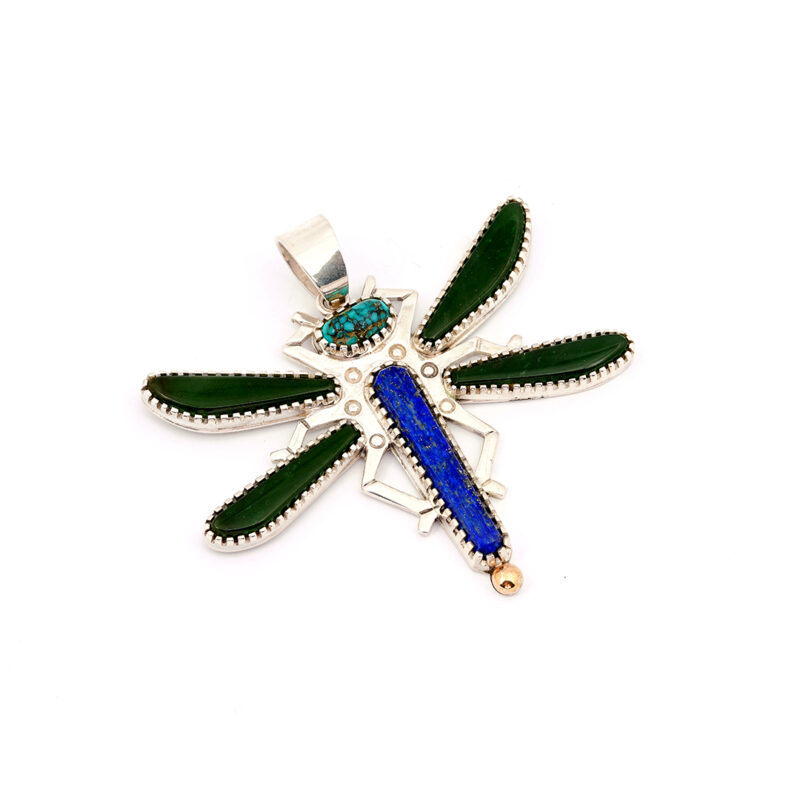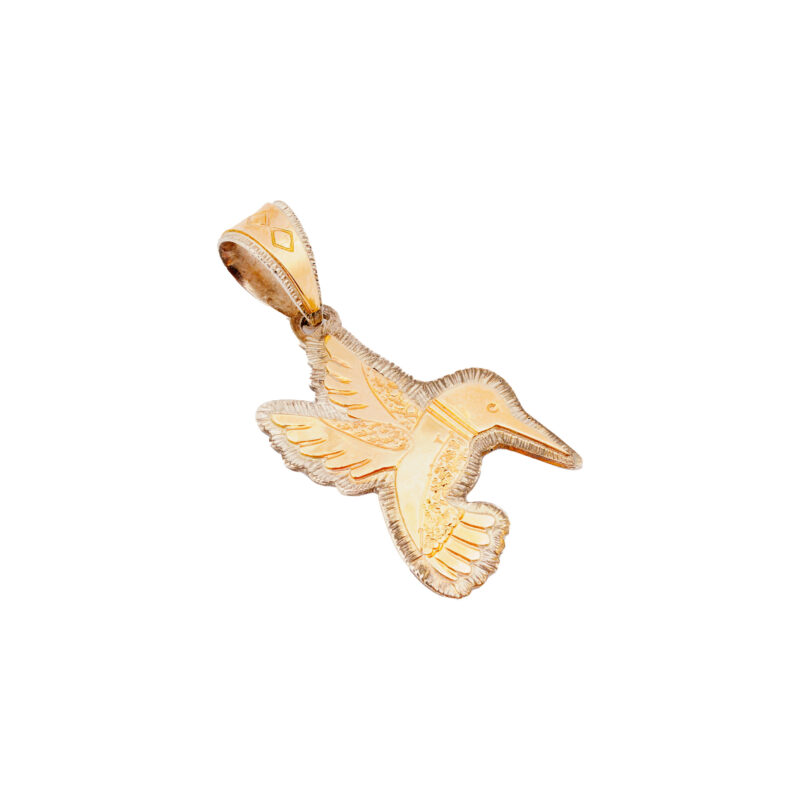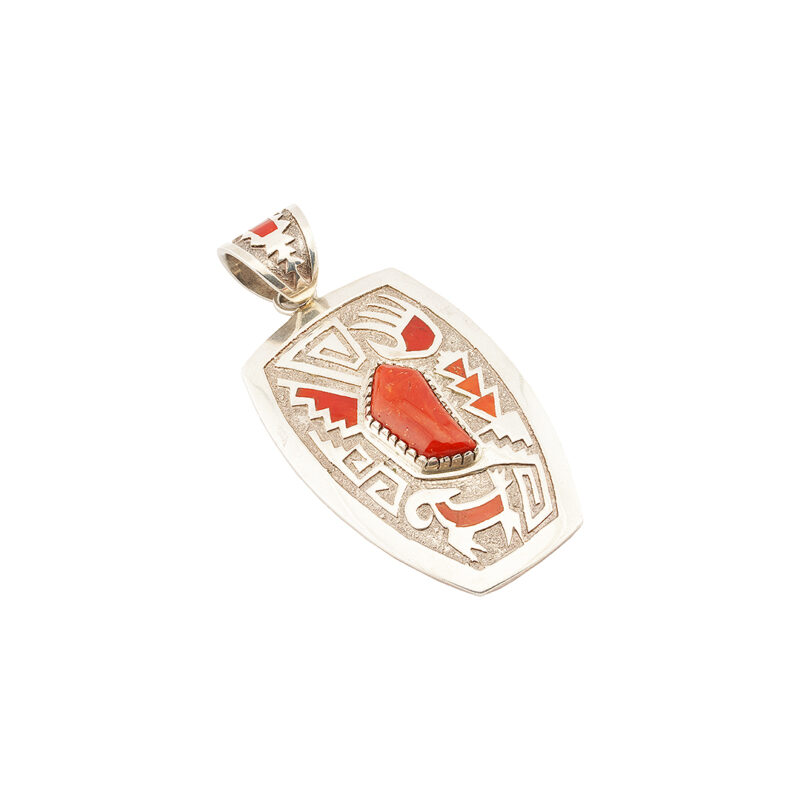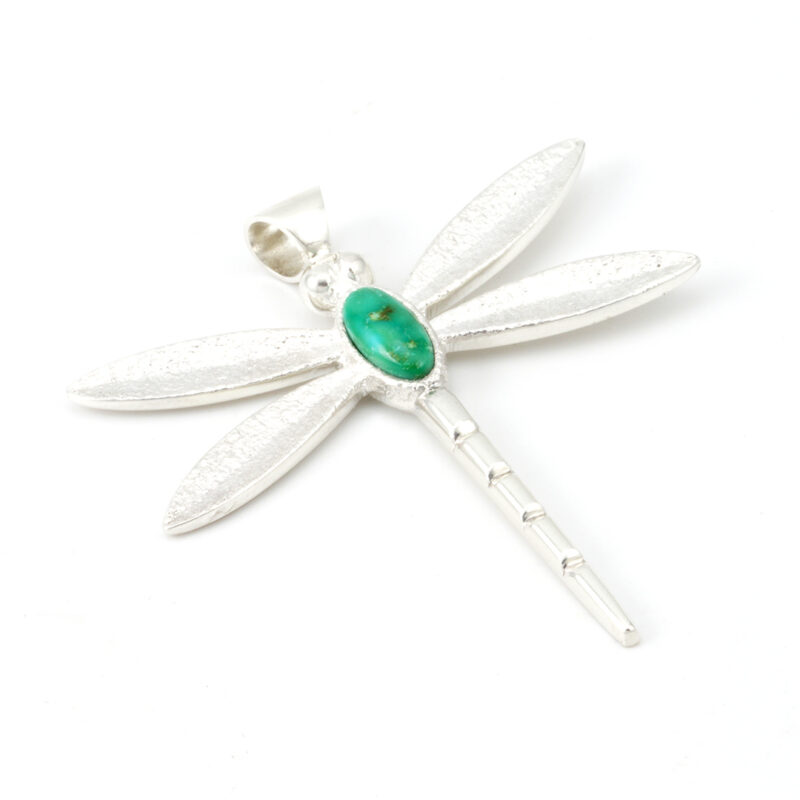Pendants
Tradition in Form: The Story of Native American Pendant Jewelry
Pendants have long played a meaningful role in American Indian jewelry, functioning as more than just decoration—they are powerful symbols of identity, spirituality, and cultural storytelling. Across generations, Native artists have crafted pendants using evolving techniques and materials, each one reflecting the creativity and values of its maker. At Faust Gallery, we honor this history by offering a curated selection of pendants that span from early adornment to today’s innovative contemporary works.
Early Origins: Symbolism and Natural Materials
Before silversmithing was introduced, Indigenous peoples across North America created pendants from natural materials like shell, stone, turquoise, bone, and wood. These early pieces were often worn as amulets, ceremonial adornments, or status symbols, suspended from cords made of sinew or plant fiber.
In cultures such as the Ancestral Puebloans, Mimbres, and Hohokam, pendants made from carved stone and shell have been uncovered in sacred and burial sites, speaking to their deep cultural and spiritual roles.
19th to Early 20th Century: The Silversmithing Era
The late 1800s brought significant change with the emergence of silversmithing among the Navajo, later adopted by the Zuni and Hopi. Artists began creating pendants from coin silver, and later sterling silver, often adorned with turquoise, coral, or jet. Designs were stamped, repousséed, or cast into symbolic shapes, such as najas, crosses, and arrowheads, blending traditional Indigenous meanings with outside influences introduced through trade and colonization.
These pieces were personal, meaningful, and worn during daily life and ceremony alike.
Mid-20th Century: Artistic Growth and Technical Precision
From the 1930s through the 1970s, Native pendant design entered a golden era of refinement and innovation. Navajo artists continued to evolve bold and elegant forms with large turquoise cabochons, while Zuni artists gained fame for their intricate stone inlay and cluster work. Hopi jewelers developed the iconic overlay style, layering silver to depict traditional imagery such as katsinas, clan symbols, and migratory patterns.
Pendants from this period are now considered vintage masterworks—collectible for their craftsmanship and deep cultural expression.
Contemporary Pendants: Sculptural Art and Storytelling
In the contemporary era, a new generation of Native artists has elevated pendant design into the realm of fine art. Their work blends traditional knowledge with modern materials, precise fabrication, and personal vision.
Boyd Tsosie (Navajo) is celebrated for his refined silverwork and timeless aesthetic. His pendants often feature clean lines, precise stone settings, and subtle stampwork that reflects both spiritual symbolism and elements from the natural world. Blending traditional Navajo techniques with a contemporary sensibility, Tsosie creates pieces that are elegant, balanced, and deeply rooted in heritage.
Isaiah Begay (Navajo) brings a bold, sculptural approach to pendant design. Known for his use of tufa casting and high-grade stones, his work is strikingly modern while remaining connected to Navajo tradition. Begay’s pendants are often abstract and dimensional, offering a strong personal style and refined minimalism that speaks to both innovation and cultural continuity.
Thomas Jim (Navajo) is recognized for his powerful, textured silverwork and exceptional craftsmanship. His pendants often feature rich natural stones, detailed stampwork, and a strong sense of form. Drawing from Navajo traditions while exploring modern design, Jim creates pieces that are both grounded in culture and uniquely his own.
Marco Begay (Navajo) is known for his intricate and narrative-driven jewelry. His pendants frequently incorporate inlay, high-relief silverwork, and symbolic imagery inspired by Navajo mythology, cosmology, and storytelling. With a precise, painterly approach, Begay weaves tradition and personal vision into pieces that are both visually compelling and culturally resonant.
A Tradition Worn Close to the Heart
American Indian pendants remain one of the most expressive forms of wearable art. They represent identity, honor tradition, and allow the artist’s voice to resonate with the wearer. Whether minimalist or complex, antique or cutting-edge, each pendant holds meaning—shaped by hands and hearts with deep cultural ties.
At Faust Gallery, we are proud to represent the historic and contemporary legacy of Native pendant makers, including important artists like Boyd Tsosie, Isaiah Begay, Thomas Jim, and Marco Begay. Our collection reflects a living tradition—where craftsmanship, heritage, and innovation come together in jewelry that speaks across generations.
-

Ric Charlie Tufa Cast Inlaid Figure Pendant
$1,800.00 Add to cart -

Tim Hererra Sterling Silver Turquoise Pendant
$800.00 Add to cart -

Boyd Tsosie 14K Gold Turquoise Pendant
Read more -

James Faks Sterling Silver Pendant
$300.00 Add to cart -

James Faks Sterling Silver Large Diamond Shaped Pendant
$380.00 Add to cart -

Charles Loloma 14K Gold Corn Maiden
$16,000.00 Add to cart -

Kenneth Johnson 18K Turquoise Pendant
$4,800.00 Add to cart -

Mike Bird Romero Bisbee Figure Pendant
$3,200.00 Add to cart -

Craig Agoodie Sterling Silver Pendant
$600.00 Add to cart -

Thomas Jim Turquoise Sterling Silver Cross Pendant
$595.00 Add to cart -

Howard Nelson 14K And Silver Bisbee Pendant
$1,800.00 Add to cart -

Ray Tracey Gold Original Handmade Set
$9,400.00 Add to cart -

Ray Tracey 14K Gold Inlaid Pendant
$7,200.00 Add to cart -

Duane Maktima Sterling Silver Pendant With Inlay
$2,600.00 Add to cart -

Duane Maktina Sterling Silver Pendant With Turquoise
$650.00 Add to cart -

Duane Maktima Sterling Silver Pendant
$2,200.00 Add to cart -

Tim Herrera Sterling Silver Dragon Fly Pendant
$1,200.00 Add to cart -

Dina Huntinghorse Gold Over Silver Pendant
$1,200.00 Add to cart -

Don Supplee Sterling Silver Stylized Parrot Pendant On Necklace
$2,800.00 Add to cart -

Mike Perry Sterling Silver Coral Pendant
$1,800.00 Add to cart -

Darryl Dean Begay Sterling Silver Dragonfly
$600.00 Add to cart

